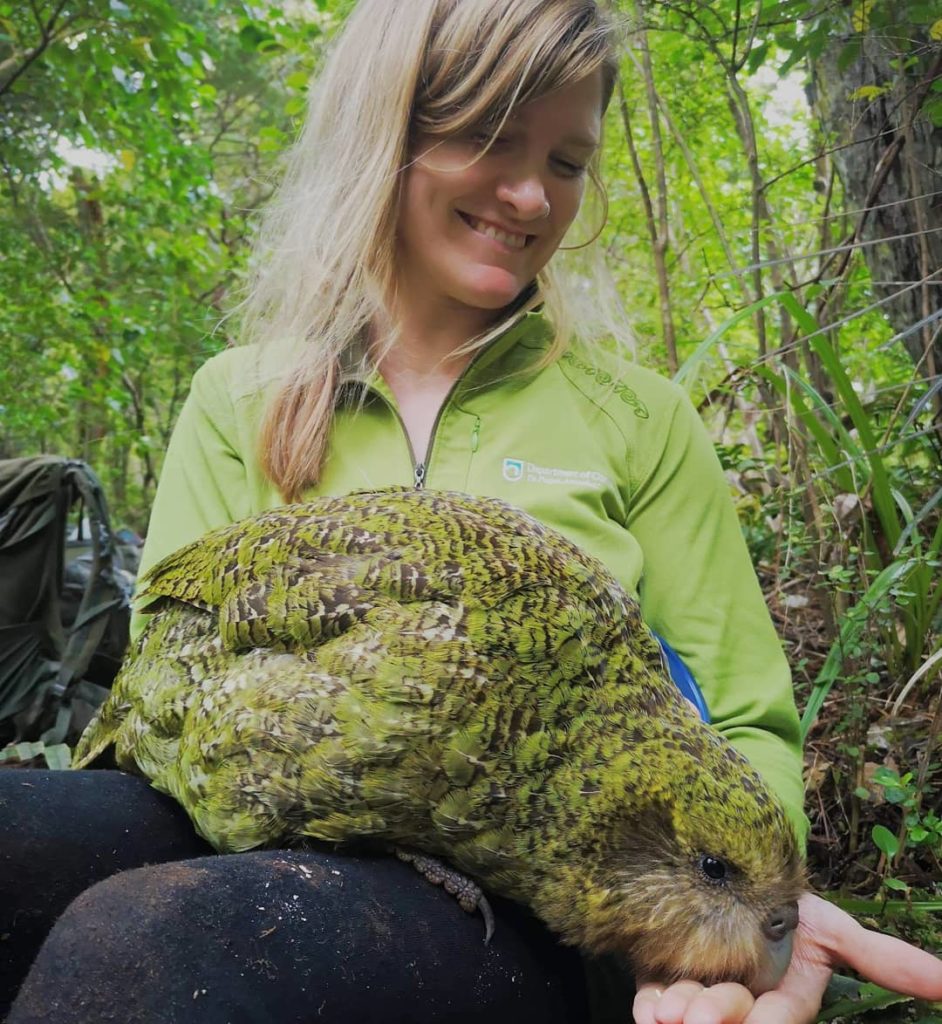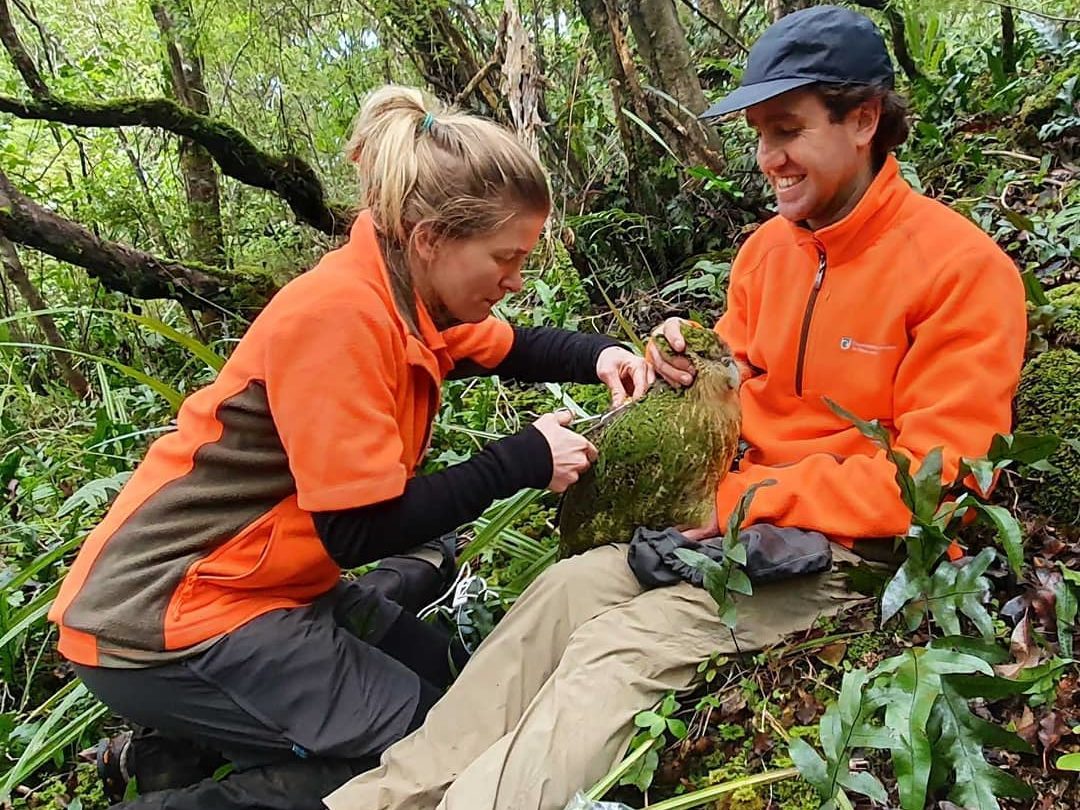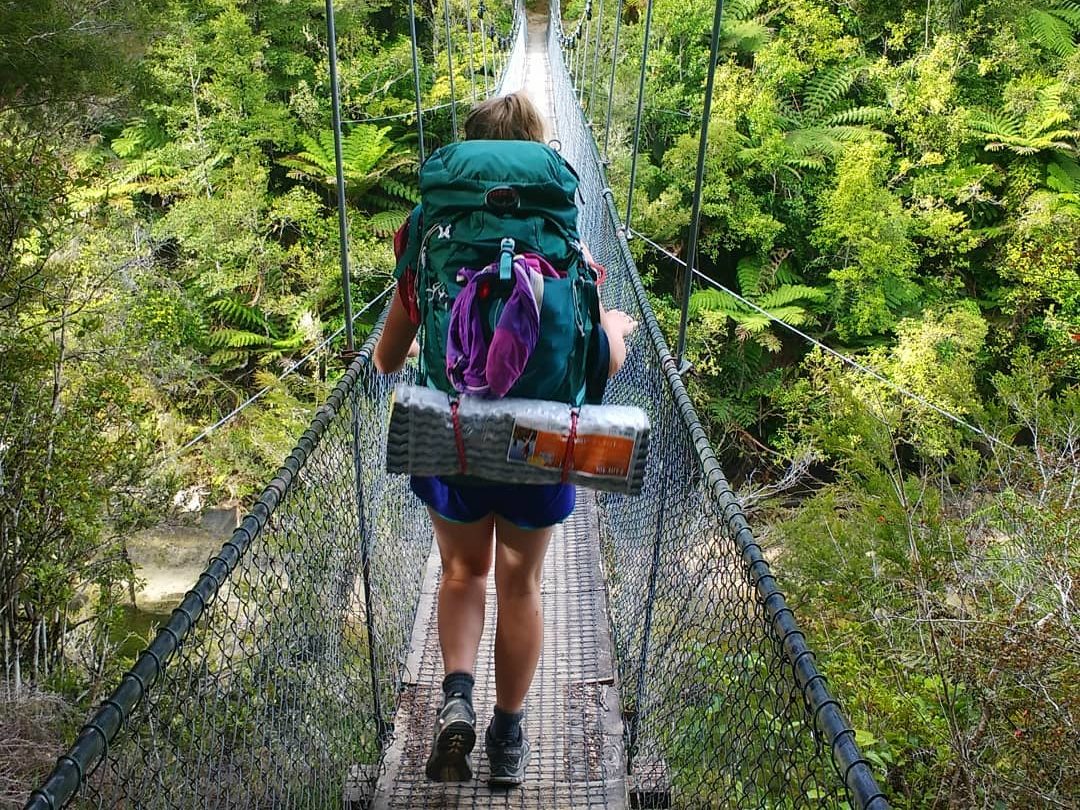Sarah Little spends her time caring for kākāpo on Whenua Hou, tramping around Aotearoa and telling conservation stories through her popular cartoons.
Today, we’re chatting with the incredible conservationist behind the cartoons. Sarah, thank you so much for the opportunity to interview you today.
Firstly, what sparked your passion for conservation?
I’ve been obsessed with animals and conservation for as long as I can remember; in my high school yearbook I was voted “Most likely to hug a tree” which probably says it all!
Kākāpo are a much-loved national treasure. What have you learnt from working with them? Has anything surprised you?
The Kākāpo Recovery are incredible and I’ve acquired a lot of unusual skills while working with them in the field, like: how to extract a fat bird from a tiny hole in the ground, how to draw a runway for a plane on a beach and how to live on a remote island for a month at a time.
I think the biggest surprise was just how resilient kākāpo are. In general birds have a knack of being alive one minute and dead the next, however, kākāpo break the mould – they’re tough as nails and seeing them kick butt when it comes to overcoming a deadly disease like Aspergillosis is awe-inspiring.


Aotearoa is known as the land of birds, but our country is also home to some amazing native lizards, insects and amphibians. Do you have any favourite moments of interacting with some of our not-so-feathery natives?
My partner recently spotted a Canterbury gecko hanging out in our backyard in Banks Peninsula. I’ve seen some incredible lizards on predator-free islands but nothing is more pee-your-pants level exciting than the idea of that gecko chilling in OUR GARDEN! Our community does a lot of backyard trapping and it’s great to see more natives returning to the neighbourhood.
Your cartoons have been enjoyed by thousands of New Zealanders. What inspired you to start drawing and sharing your work?
I’ve been making comics ever since I was six years old and debuted my first poorly drawn comic to my brothers (it was about a magic dog and they were not impressed). Now my drawing skills have improved a bit and I’ve discovered that cartoons are a fun way to share important information about conservation, birds and hashbrowns.
Why do you think it’s important for people in the conservation space to tell their stories?
Advocacy is one of the most powerful tools we have in conservation; people can’t save what they don’t know! It’s amazing how one story can inspire a whole community to get involved.
What do you hope people take from your cartoons?
There’s a fair bit of science-communication in my birdy cartoons; I hope that people learn something that sparks an interest in conservation – and if not, I hope it at least gives them a good chuckle.

Sarah, as an avid tramper, how has hiking around New Zealand informed your view of conservation?
In 2017 I walked the South Island leg of Te Araroa. I vividly remember walking through a silent valley and seeing a couple of ferrets frolicking in the grass; the idea of that silence creeping across Aotearoa is pretty scary. It really opened my eyes. After finishing the walk at Bluff I went and got a job trapping on a pest-free sanctuary island!
Are there any New Zealand sanctuaries, natural landmarks or hikes that are still on your bucket list?

Oh yeah HEAPS! I dream about seeing New Zealand’s sub-Antarctic islands, but closer to home my tramping list includes exploring more of Fiordland, Rakiura and the Southern Alps. Also, I still haven’t seen a North Island kōkako, so that’s on the list too.
Do you have any advice for New Zealanders that want to feel more of a connection with nature and our native taonga?

Go tramping! Get out there and climb a hill, stick the billy on and shove biscuits in your face while you listen to the birds and watch the light change on the maunga. There’s no better way to recharge and reconnect with nature – you could even volunteer to do a kea survey or check some traps while you’re out there.
Thank you so much for taking the time to speak with us today Sarah.
If you want to follow Sarah and see more of her work. You can find her @SarahMaybeLittle on Facebook and Instagram.

